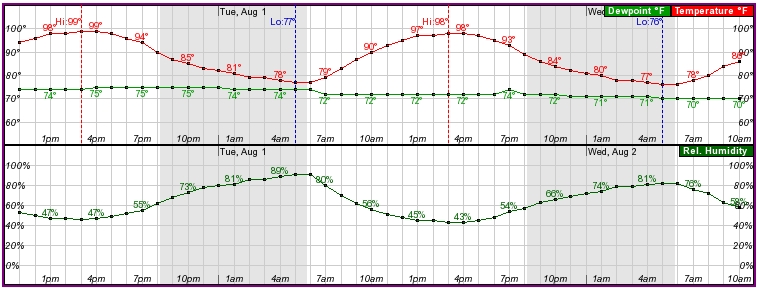The chart below charts out, from top to bottom, temperature, dew point and relative humidity. Relative humidity is a function of temperature, so notice that the temperature line (top) and relative humidity line (bottom) move in an almost perfect mirror pattern. But notice the dew point stays unchanged.

I grabbed this screen shot from the NOAA website a couple of years ago when we were going through a long hot and humid spell.
At night time (the lightly shaded area) the relative humidity shoots up to 89%, but during the day it drops to 43%. But it is not any less humid during the day, and it is just as uncomfortable as during the night. That is because relative humidity is not directly measuring how much actual moisture is in the air. It is telling you how much more moisture you can add to the air at a given temperature. Really useful to you, isn't it?
The dew point is a direct measure of how much moisture is in the air. It is not dependant on temperature and will not fluctuate when the temperature changes, only when the moisture content of the air changes.
2 comments:
Tell me how you calculate Dew Point. Dick in FL
Here is a link to the math for calculating dew point:
Dew Point Formulas
The way NOAA determines dew point though is a neat instrument that has a mirror that is heated up and then slowly cooled. There is an optical sensor looking at the mirror. When the mirror starts to collect condensation the optical sensor can detect that and it records the temperature of the mirror and that is the dewpoint. It then heats the mirror up again, the condensation evaporates, and it repeats the process. Clever.
Post a Comment